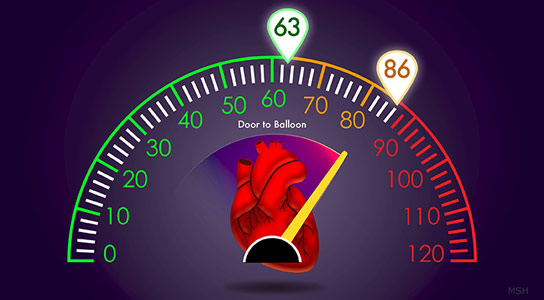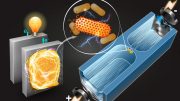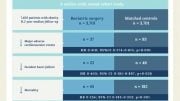
Research shows a strong connection between improved quality of timely treatment and survival rates following heart attacks. Credit: Michael S. Helfenbein
Newly published research reveals that doctors and emergency medical personnel have reduced the amount of time it takes to treat emergency heart patients, and shows that advances in the quality of care in terms of timely treatment are very importantly linked with survival after heart attacks.
The retrospective study, published online in the journal Lancet, solves a medical riddle posed by previous research, which found that cutting “door-to-balloon” times had no effect on patient outcomes. Balloon, in this case, refers to the tiny balloons that are inflated in patients to reopen blocked blood vessels.
In recent years, doctors and emergency medical personnel at all levels have worked diligently to reduce “D2B” times nationwide.
The key factor, the new research discovered, is that many more people are receiving emergency heart treatment than even a decade earlier — including patients with more complicated health issues that put them at higher risk for death. A more detailed look at the data, using population-level results in a statistical model, indicates that there is a medical benefit to reducing D2B time.
“This settles some of the concern that shorter times were not benefiting patients and makes clear that advances in quality of care in terms of timely treatment is very importantly linked with survival after heart attacks,” said senior author Dr. Harlan Krumholz, the Harold H. Hines, Jr. Professor of Medicine at Yale School of Medicine and director of the Yale-New Haven Hospital Center for Outcomes Research and Evaluation.
The study looked at National Cardiovascular Data Registry information from 150,116 primary percutaneous coronary interventions (pPCI) performed in 423 hospitals, between 2005 and 2011. During that time, the number of pPCI procedures jumped 55.4%. The average D2B time dropped from 86 minutes to 63 minutes.
Reference: “Relation between door-to-balloon times and mortality after primary percutaneous coronary intervention over time: a retrospective study” by Dr Brahmajee K Nallamothu, MD; Prof Sharon-Lise T Normand, PhD; Yongfei Wang, MSc; Prof Timothy P Hofer, MD; Prof John E Brush Jr, MD; John C Messenger, MD; Prof Elizabeth H Bradley, PhD; Prof John S Rumsfeld, MD and Prof Harlan M Krumholz, MD, 19 November 2014, The Lancet.
DOI: 10.1016/S0140-6736(14)61932-2
The first author of the paper was Dr. Brahmajee Nallamothu, who is an interventional cardiologist at the University of Michigan Health System.









We need paramedics on ambulances who are trained in this procedure.